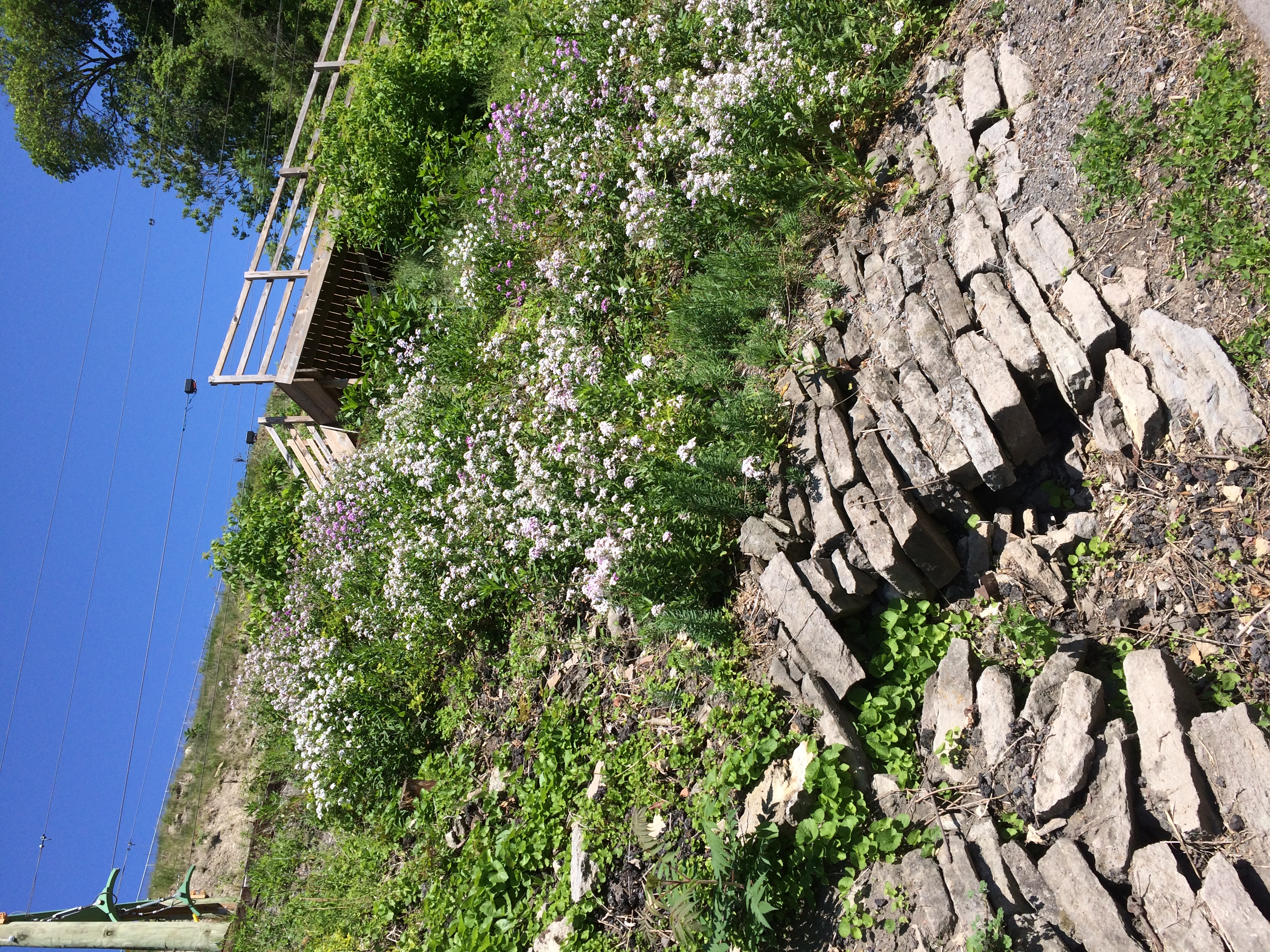On our last day in metro Buffalo, we drove to Lockport, New York, late in the morning to see the Erie Canal. Even in my South Texas elementary school, and in U.S. history classes later, we heard about the Erie Canal. It probably was of special interest to my high school U.S. history teacher, the estimable former Wobbly Mrs. Collins, who grew up in Buffalo. Yuriko, on the other hand, heard nothing about it in Japanese schools; no reason she would.
I’ve heard the songs, too. The oft-recorded one about the loyal mule (which Bruce Springsteen does wonderfully, paying homage to Pete Seeger). The more fun one is about drunkenness among bargemen (and -woman), which I expect was true enough to life in the early days of the canal. The obscure Yellow Jack version, incidentally, used Lockport as a backdrop for the video.
Despite all that, I’d never gotten around to seeing the canal with my own eyes. So it was time. Naturally, we visited only the smallest slice, since the canal stretches more than 360 miles.
Lockport’s an interesting spot on the canal because it originally had five locks, which is unusual enough to have its own name: Flight of Five Locks, to allow the canal to cross the Niagara Escarpment. For the 1820s, I expect it was state-of-the-art engineering.
We got there at about 10:30 and knew we were in the right place.
There were other signs as well.
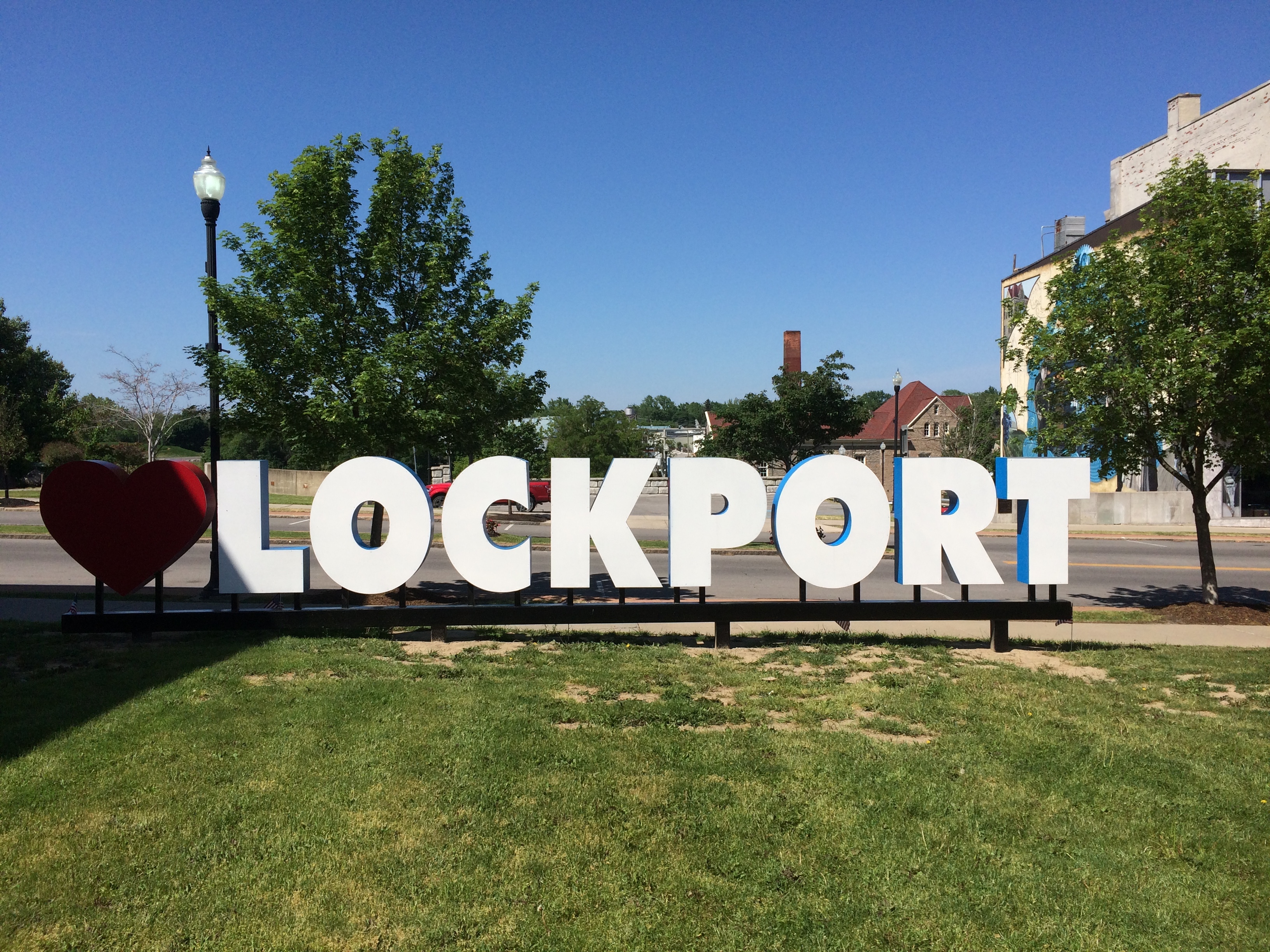
Looking east, from the bridge over the locks.
As usual, an historic site isn’t as simple as somewhere or something that magically hasn’t changed since its most interesting period. In structure, and certainly a lot of other details, the canal as we saw it isn’t how the 19th-century bargemen would have.
To the left in the picture is the original canal locks, the five of the name. It’s a narrow passage compared to the wider channel on the right, which involves two locks covering the same distance as the older five locks. In the early 20th century, the state of New York upgraded its canals, including the Erie, to form the New York State Barge Canal system. That’s when wider channel was built, no doubt state-of-the-art in its time.
Such a change made for much faster commercial movement on the canal. Of course that’s an obsolete virtue now, though the wider canal still makes for the more expeditious movement of pleasure craft, which are all that use the waterway anymore. The last commercial vessel to ply the Erie Canal, or rather that branch of the NYS Barge Canal system, was the Day Peckinpaugh, which quit service in 1994. Later than I would have thought.
Apparently there was (in effect) a Day Peckinpaugh class of ships on the NY canals. “After her 1921 maiden voyage, she was followed by over a hundred similar motorships on the Barge Canal,” notes the Waterford Maritime Historical Society. A lot more about the ship, at first unimaginatively called the Interwaterways Line Incorporated 101 and built to traverse the Great Lakes as well, can be found here.
We took a tour that started with a walk along the canal. Here is one of the two locks filling or draining, I forget which.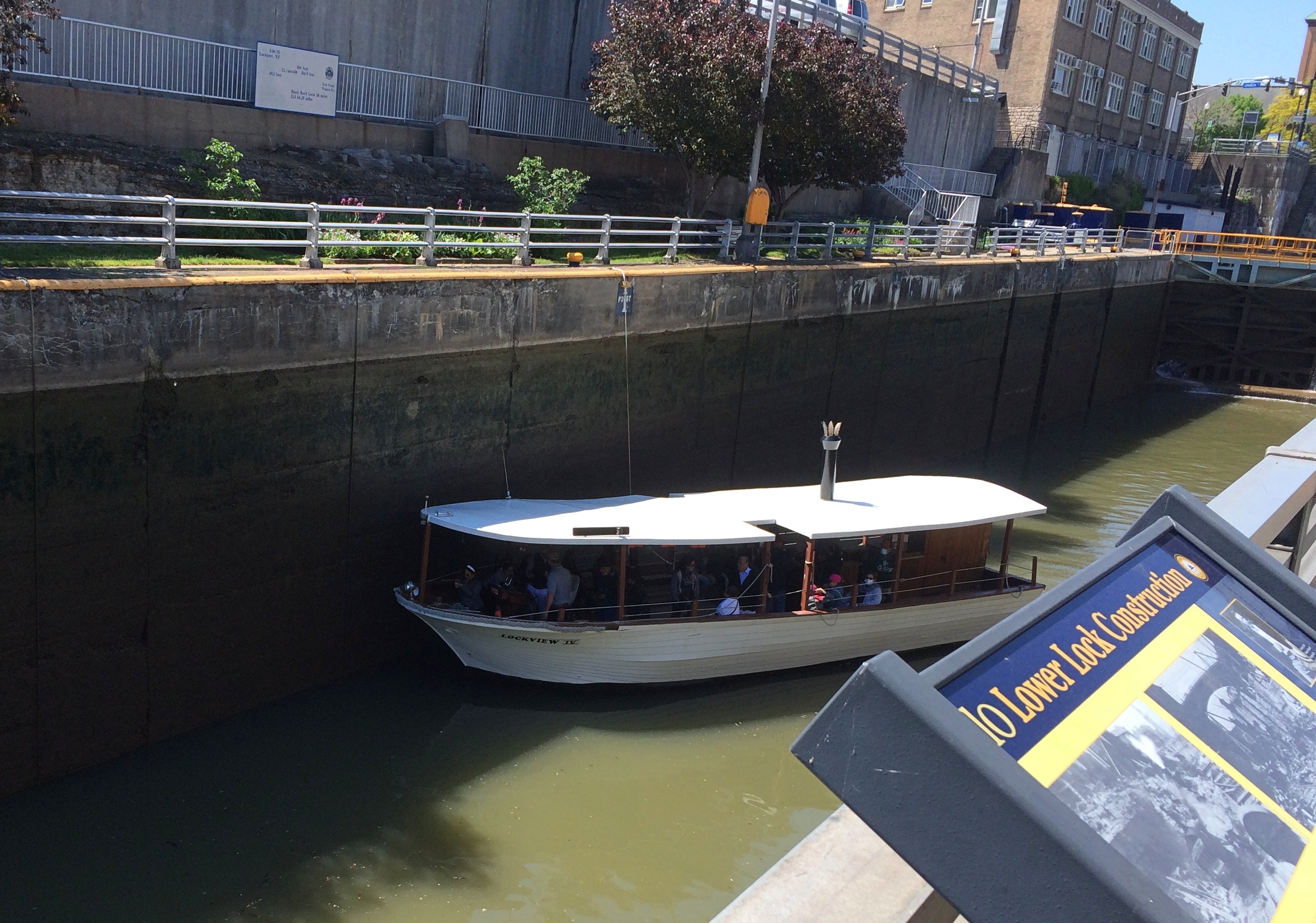 More boats.
More boats.

The “Upside-Down Bridge.” It’s a railroad bridge over the canal in Lockport, build just before the canal was improved.

“This bridge is a multi-span railroad bridge built in 1902 by the prolific and noteworthy King Bridge Company of Cleveland, Ohio,” says HistoricBridges.org. “The main span which crosses the river is a Baltimore deck truss. The bridge was referred to as the ‘Upside-Down Bridge’ because as a deck truss, it looks like a through truss positioned upside-down.”

Near the bridge, the tour turned into a man-made cave in the hill, a water tunnel (hydraulic raceway) built in the 19th century using muscle power, hand tools and black powder.
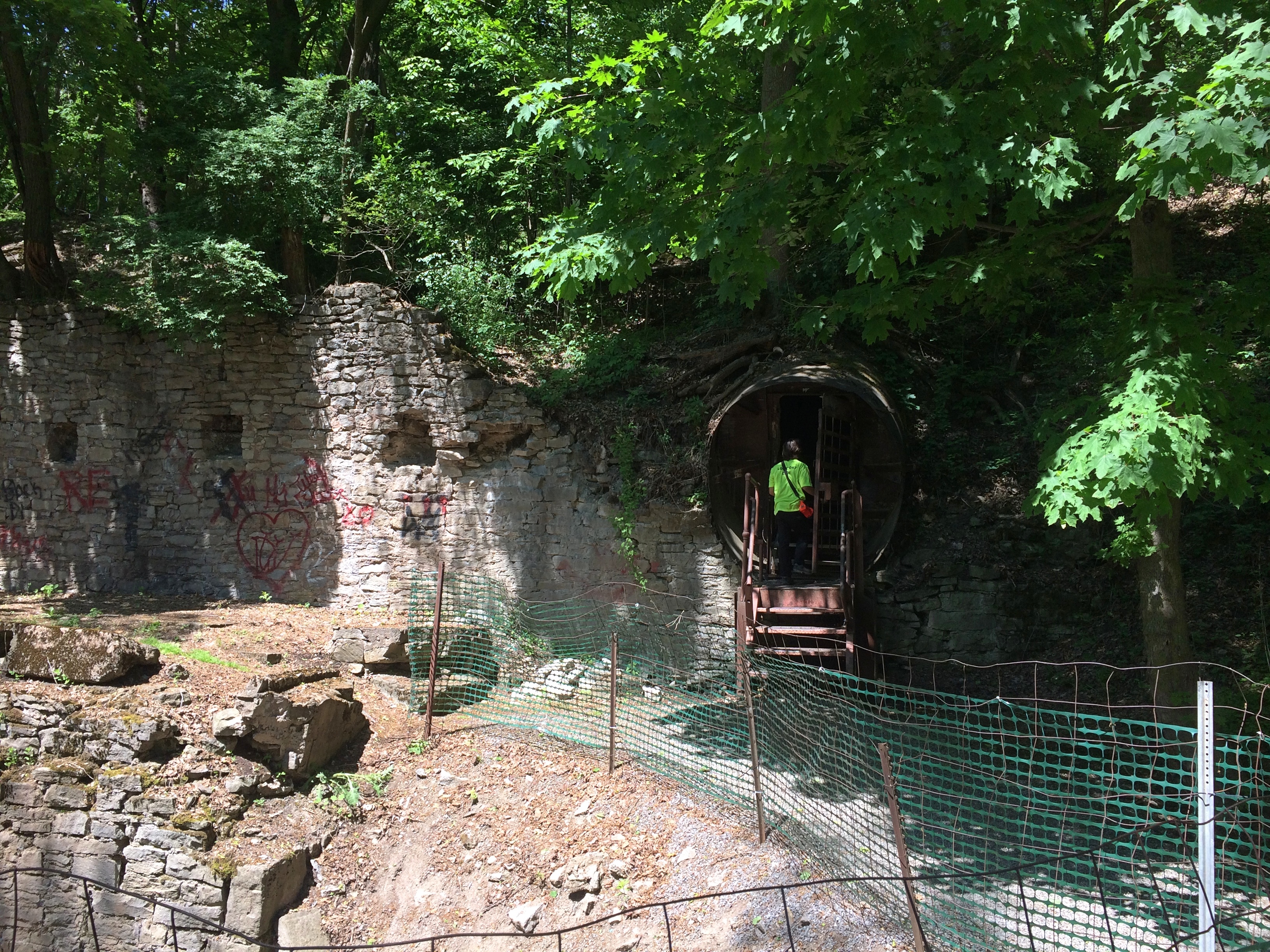
The raceway used to power local industry, opening for tourists in 1977. That happened, it seems, because the natural cave in the limestone under Lockport proved disappointing in the 20th century, and possibly a locus of fraud in the 19th century.
It was dark in there.
The tour also involved a short boat ride in part of the tunnel that’s partly flooded still. A novelty, certainly, but not for anyone even a little claustrophobic. I figure they stay away from commercial caves anyway.
Out in the sun again, we looked around town a little more. The west entrance of the locks is visible from Big Bridge.
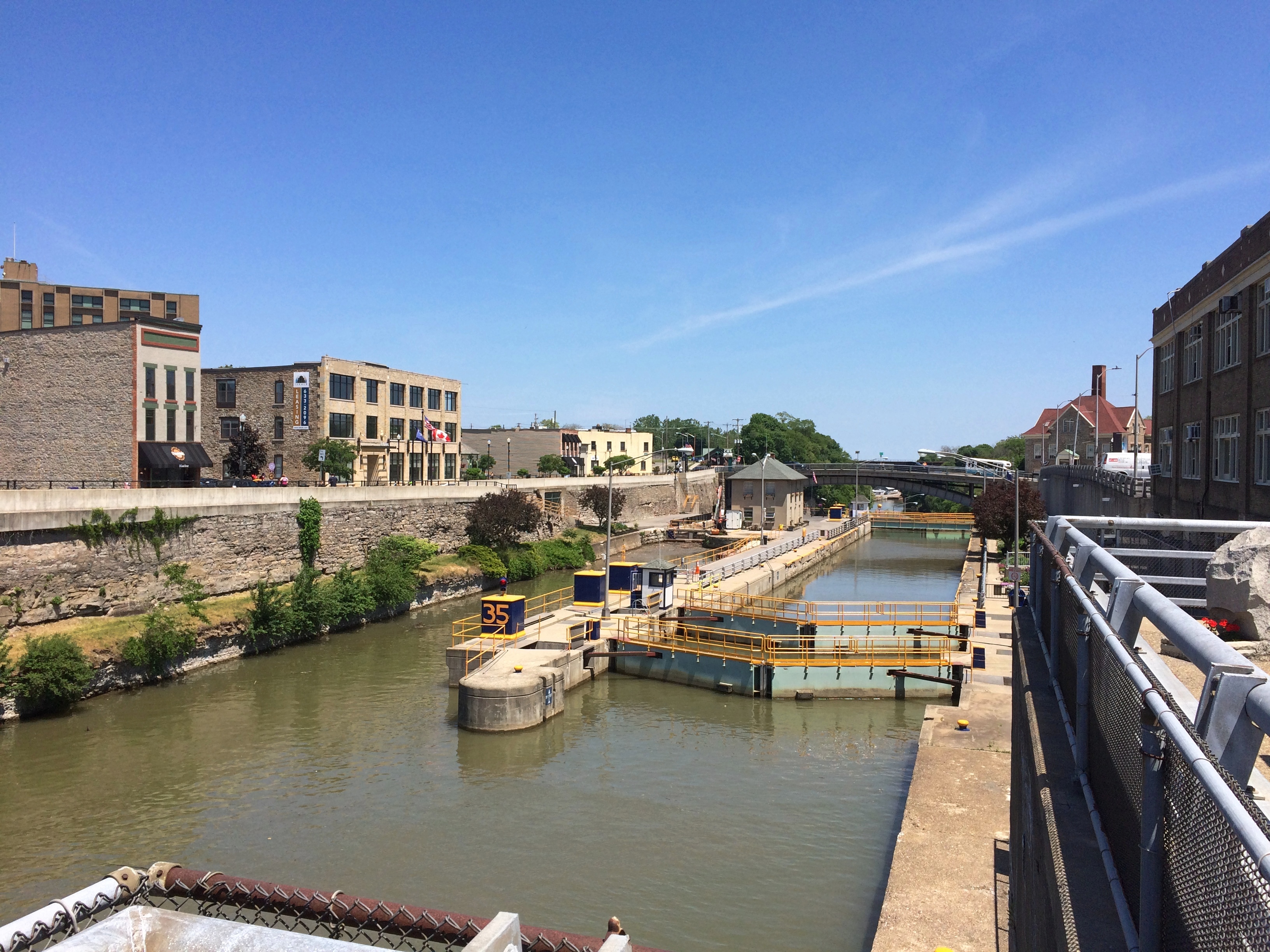
A sign near Big Bridge (built 1914) claims that at 399 feet, the bridge over the canal at that point is one of the world’s widest. Maybe so, but it’s completely undistinguished in every other way.
One more sight in Lockport.
A fairly recent (2015) mural called “Guardian of the Waters” by Augustina Droze and Bruce Adams. Its plaque says: “The mural is inspired by the history and engineering marvel of the Flight of the Five Locks, which opened a path to the West, inspired inventions that changed the world, and gave rise to the city of Lockport, NY.”

